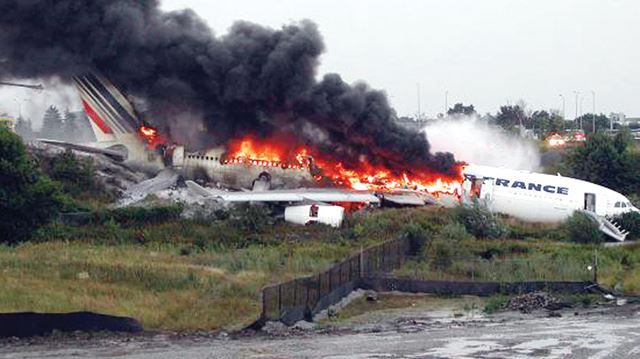On August 2nd 2005, an Air France Airbus A340 crashed after skidding off the runway at Toronto Pearson International Airport. The quad-jet skidded off the runway due to unfavourable weather conditions, and the poor landing decisions made by the pilots. Looking at the aircraft’s wreckage, it was miraculous that no one lost their lives during the incident.
Flight Details
The Airbus A340-300, with registration F-GLZQ, was performing a scheduled flight (Air France Flight 358) from Paris Charles de Gaulle to Toronto Pearson. A total of 309 people were on board including 297 passengers and 12 crew members. The crew consisted of Captain Alain Rosaye (57-year-old), who had 15,411 total flight hours, and First Officer Frédéric Naud (43-year-old), who had 4,834 hours of flight time.
The weather was bleak at Pearson that day and thunderstorms were forecasted for arrival during the pre-flight inspection. As many as 540 flights were cancelled at Pearson on the same day. Most of the widebody aircraft were diverted to New York, Montreal and Syracuse whereas the smaller aircraft were diverted to nearby Canadian airports in Hamilton, Ottawa, and Winnipeg.
The quad-jet landed on Runway 24L during blustery weather – severe winds, heavy rain and thunderstorms nearby. Runway 24L is the shortest runway at Toronto Pearson, 2,743 metres (9,000 feet) in length. Given that the weather was blustery, the aircraft touched down farther along the runway and overshot the end of the runway. The A340 continued on for another 300 meters before it came to rest in the Etobicoke Creek ravine at a speed of 148 km/h.

Even before landing, the aircraft was rocking from side to side as reported by some passengers on board, possibly due to turbulence and strong winds associated with the thunderstorms nearby. The crew had heard that heavy precipitation was causing the runway to have poor traction. After receiving the report from an aircraft before them, the pilots retook manual control of the aircraft for landing. One of the passengers described the incident as like a “car accident, but it keeps going and going, non-stop.”
After the aircraft came to rest, the crew noticed fire outside and began the evacuation process. During the evacuation process, one of the right middle exit slides became punctured by the debris of the aircraft. Similarly, one of the left slides failed to deploy and those on board were also unable to use the two rear left exits due to the fire. Some of the passengers were forced to jump from the aircraft. Everyone on board evacuated the aircraft within the 90-second time frame, and the first officer was the last person to leave the plane.

A Miracle Indeed
Looking at the crash site, it was miraculous that no one lost their lives during the crash and evacuation. However, two of the crew members and 10 passengers were seriously injured in the incident.
“I would say this is a miracle.”
Jean Lapierre, the Federal Transport Minister
The aircraft was substantially damaged during the runway overrun and the post-crash fire consumed most of the upper portion of the main fuselage, vertical fin, and inner wing sections. The rear portion of the fuselage on the left side was consumed by fire. Even though the fire was intense, it was mainly limited to the fuselage. During the incident, there was no major damage to the runway or blast pad at the end of the runway. Only the runway and approach lights were damaged.
Although most of the wreckage was discovered within the radius of the aircraft, there were several small components in the field before the ravine. Major break-up of the aircraft took place only after it descended into the ravine. The aircraft got engulfed by the flames and was written off. During the fire, the unpressurised portion of the rear fuselage was less affected than the rest of the fuselage. Both the wings remained attached to the fuselage other than being damaged by the fire.
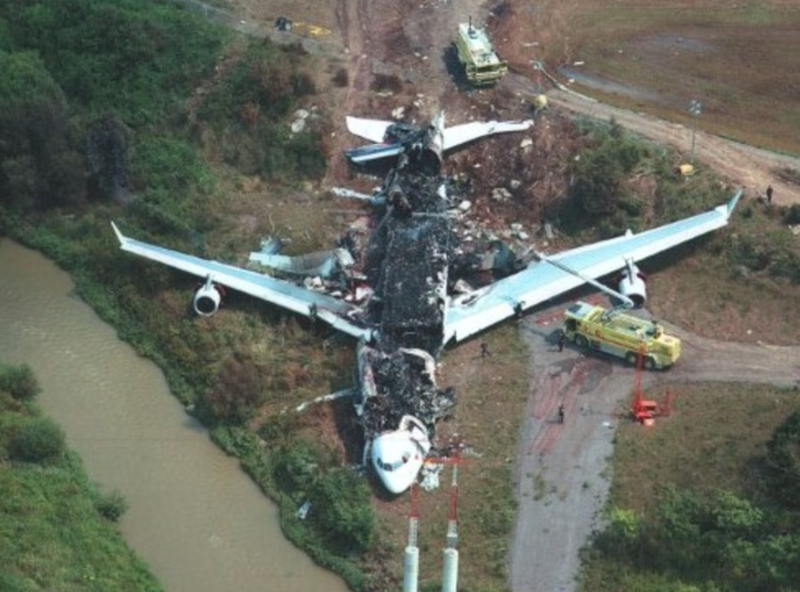
Both of the cockpit seats experienced high vertical forces during the incident. The captains’ seat was displaced from its normal position, as the floor of the seat base was fractured. Alongside, the nut attaching the centre screw to the bottom of the base on the F/O seat had been pulled. These seats were designed to withstand a vertical acceleration of 5.7 g and a longitudinal acceleration of 9 g.
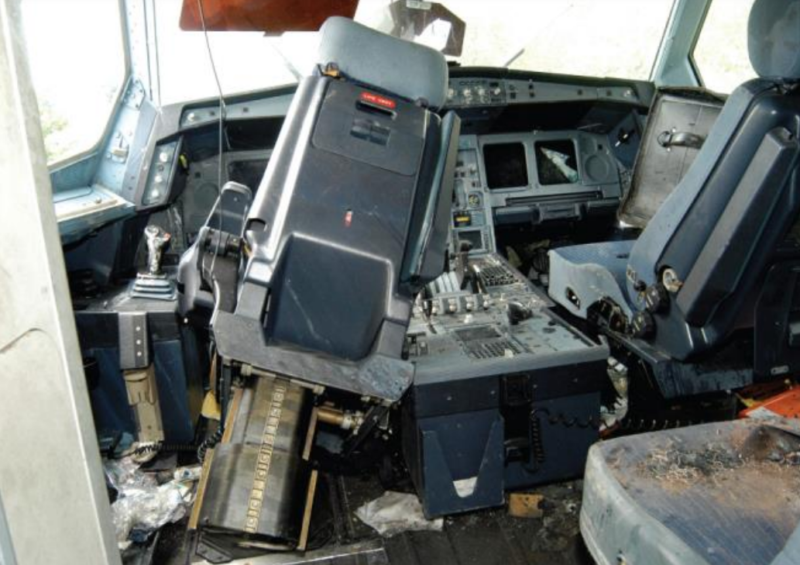
TSB Investigation
The Transportation Safety Board of Canada (TSB) investigated this incident with the cooperation of several other organizations. Airbus, Air France, Transport Canada, GE Aviation, the French Department of Transport and the US National Transportation Safety Board (NTSB) were all involved in the investigation.
The investigation revolved around the approach and landing in the midst of a severe and rapidly changing thunderstorm. It was found that there were no procedures within Air France related to the distance required from thunderstorms during approaches and landing, nor were these required by regulations.
After the pilot retook manual control of the aircraft for landing, the pilot flying increased the thrust in reaction. However, the increased power contributed to an increase in aircraft energy and the aircraft deviated above the glide path. The aircraft crossed the runway threshold about 40 feet above the normal threshold crossing height due to an increase in groundspeed and a change in the flight path.
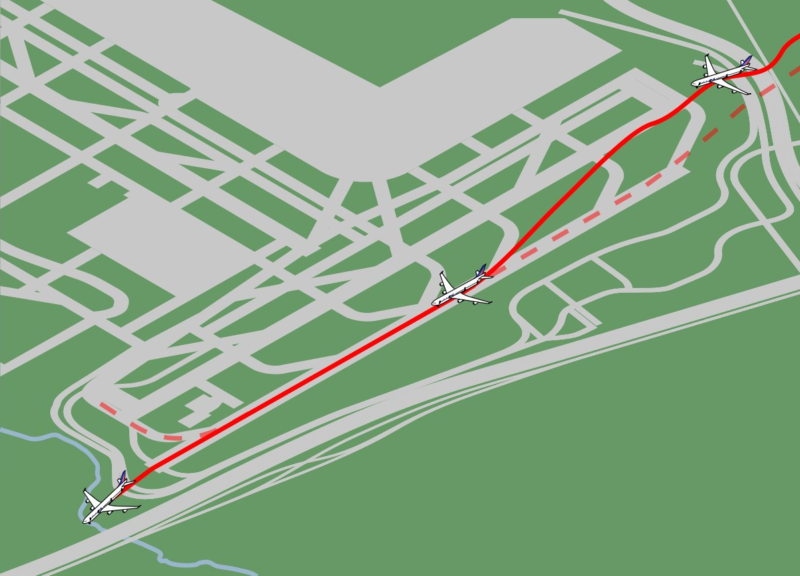
The touchdown took longer because the aircraft floated due to its excess speed over the threshold and due to the intense rain and lightning, visual contact with the runway was severely reduced. As a result, the aircraft touched down about 3,800 feet from the runway threshold, which left about 5,200 feet of runway available to stop. The A340 ended up skidding the runway at about 80 knots and was later destroyed by fire.
The following conclusions were drawn from the investigation:
- The pilots decided to land as they believed their go-around option no longer existed when they were near the threshold.
- Due to the runway being covered by water, the strength of the crosswind at touchdown exceeded the landing limits of the aircraft.
- There was no indication that the aircraft was struck by lightning.
- No indication that the aircraft encountered wind shear during its approach and landing.
- No landing distances were indicated on the operational flight plan for wet runway conditions at the airport.
Furthermore, it was found that the topography at the end of the runway and the area beyond the end of Runway 24L contributed to aircraft damage and injuries to crew and passengers. During the emergency exercise, the continuous rain diluted the firefighting foam agent and reduced its efficiency in dousing the fuel-fed fire, which eventually destroyed most of the aircraft.
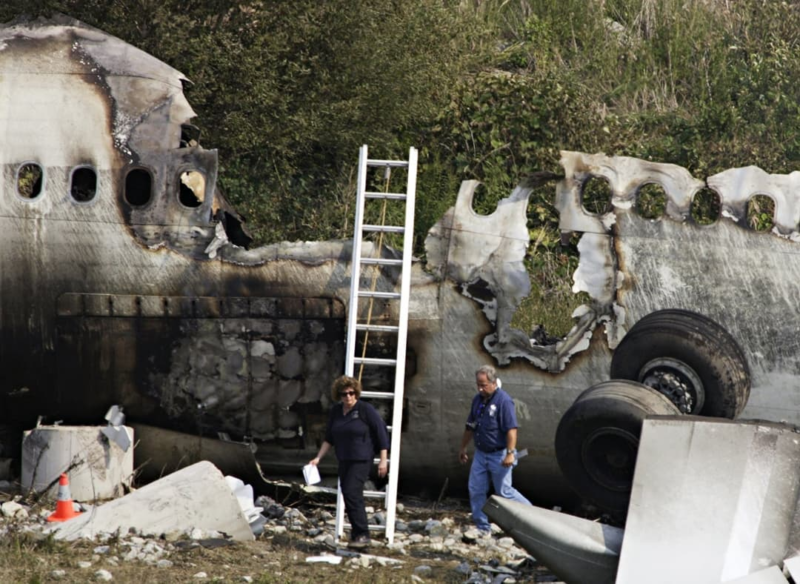
The investigation also highlighted the fact that the cockpit seats were certified to a lower standard than the cabin seats. This might have been a factor in the injuries suffered by the captain.
Image Source: TSB, Twitter


